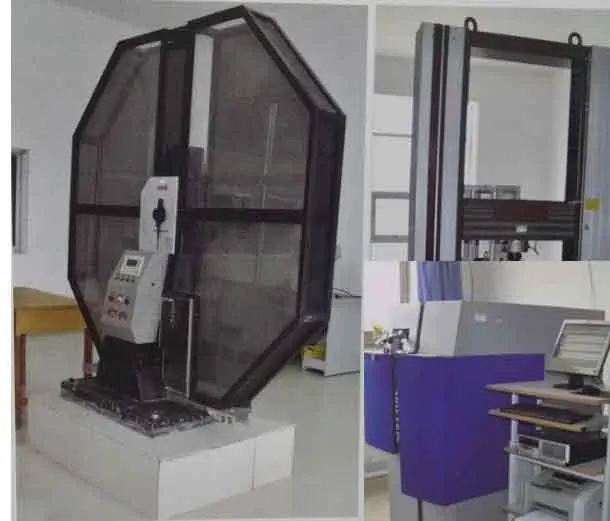Api Spec 5b Manual
Mar 06, 2018 A brief introduction of API 5L, API 5B, API 5CT and API 5D. API standards are designed to qualify the oil and petrol industry according to the legislation and environment requirements. According to API, oil and natural gas industry can have the reference standards about its industry.Under the general standards, there are some subordinated specifications drafted for each specific OCTG product. API SPEC 5B May 31, 1985 SPECIFICATION FOR THREADING, GAGING, AND THREAD INSPECTION OF CASING, TUBING, AND LINE PIPE THREADS ELEVENTH EDITION; A description is not available for this item. Standards department, American Petroleum Institute, 1220 L Street, N.W., Washington, D.C. Requests for permission to reproduce or translate all or any part of the material published herein should be addressed to the Director, Business Services. API Specification 5CT / ISO 11960 iv.
API Coupling and Threading are steel couplings that used in connecting with casing and tubing. Also known as OCTG coupling, Usually manufactured in seamless type. CCIC API Threading Inspection make your tubing and casing have a leak resistance.
Coupling Material grade was same as tube body (API 5CT K55/J55, N80, L80, P110 etc), same PSL or providing higher grades than the requirements. Also the same heat treatment applicable, except there is an special requirements.
API Threading Inspection is for the threads manufactured and inspected under API 5B. Couplings shall not be expanded to provide required threads taper under API specifications.
Couplings with API threads may not have a leak resistance as high as the internal yield pressure of the pipe body, due to inadequate bearing pressure between the coupling and pin.
Threading and Measurement
API 5B covers dimensions, tolerances and marking for API threads, and gauge used for control acceptable criteria for threads. That standard includes thread element gauges, instruments, and requirements for the inspection of threads for line pipe, casing and tubing (round threads), and buttress casing connections.
Thread dimensions shown without specifications (or shown as NA) are not subject to inspection of diameter, ovality, and addendum.
API Casing and Tubing Specification
- API Spec 5CT Casing and Tubing
- API Spec 5B Threading, Gauging, and Inspection of Casing, Tubing, and Line Pipe Threads
- API RP 5C1 Recommended Practice for Care and Use of Casing and Tubing
- API RP 5A3 Recommended Practice on Thread Compounds for Casing, Tubing, Line Pipe, and Drill Stem Elements
- API RP 5B1 Gauging and Inspection of Casing, Tubing and Pipe Line Threads
API Threading Inspection activities we typically perform:
- Raw material selection
- Mechanical test including tensile strength
- Impact test
- Chemical properties control
- Sulfide stress cracking test (for Material grades in C90 or T95)
- Size tolerances, OD, Wall Thickness, Length and Straightness
- Threads control, threads quantity per inch, threads angle etc
- Heat treatment
- Additional markings
- Material certification
- Product Specification Level (PSL-2 or PSL-3)
- Thread dimension including: crest, root, pitch line, stab flank, load flank and included angle.
- Thread elements including thread form, lead, crest diameter, ovality, addendum, taper, thread height and thread length
The API 5B specification covers marking requirements and dimensions utilized by API Master thread gauges. The 5B specification is used when measuring pipe, tubing and casing threads, and each adheres to a specific set of guidelines. Various additional thread gauges and featured product threads are required when the API 5B specification is used. The following adhere to API 5B specifications:
- Line pipe thread inspection
- Buttress casing
- Round thread casing
- Extreme-line casing
API 5B Applications
API 5B specifications are applicable when API standards govern a product. Similarly, API 5B inspection procedures are used on threads featuring 11.5, or less, turns per inch. API 5B inspection procedures utilize the following measurements:
- Taper
- Lead
- Height
- Angle
Each thread dimension is measured and shown without included tolerances are considered connection design bases, and they’re not related, nor subjected to, measurements utilized to determine a product’s acceptance or rejection. Each manufacturer and purchaser is required to agree upon supplemental requirements before using API 5B specifications.
API 5B Inspection
API 5B specification thread inspection is used prior to shipment events. Manufacturers frequently measure a thread’s various intermediate points, and they inspect each again during destination delivery. Additionally, inspectors representing both the manufacturer and purchaser are required to inspect each 5B specification.
Api Spec 5b Manual Pdf


Api Spec 5b Manual Free
Manufacturers may utilize different methods and instruments to control manufacturing operations, and they may become flexible where specification application is required. However, acceptance or rejection of a product is entirely governed by an inspection’s results. This rule is often featured in accordance with a provided 5B specification listing, and is held in high regards during every inspection. Each API 5B specification requires consultation before implementation, and requirements must be provided by the manufacturer.
